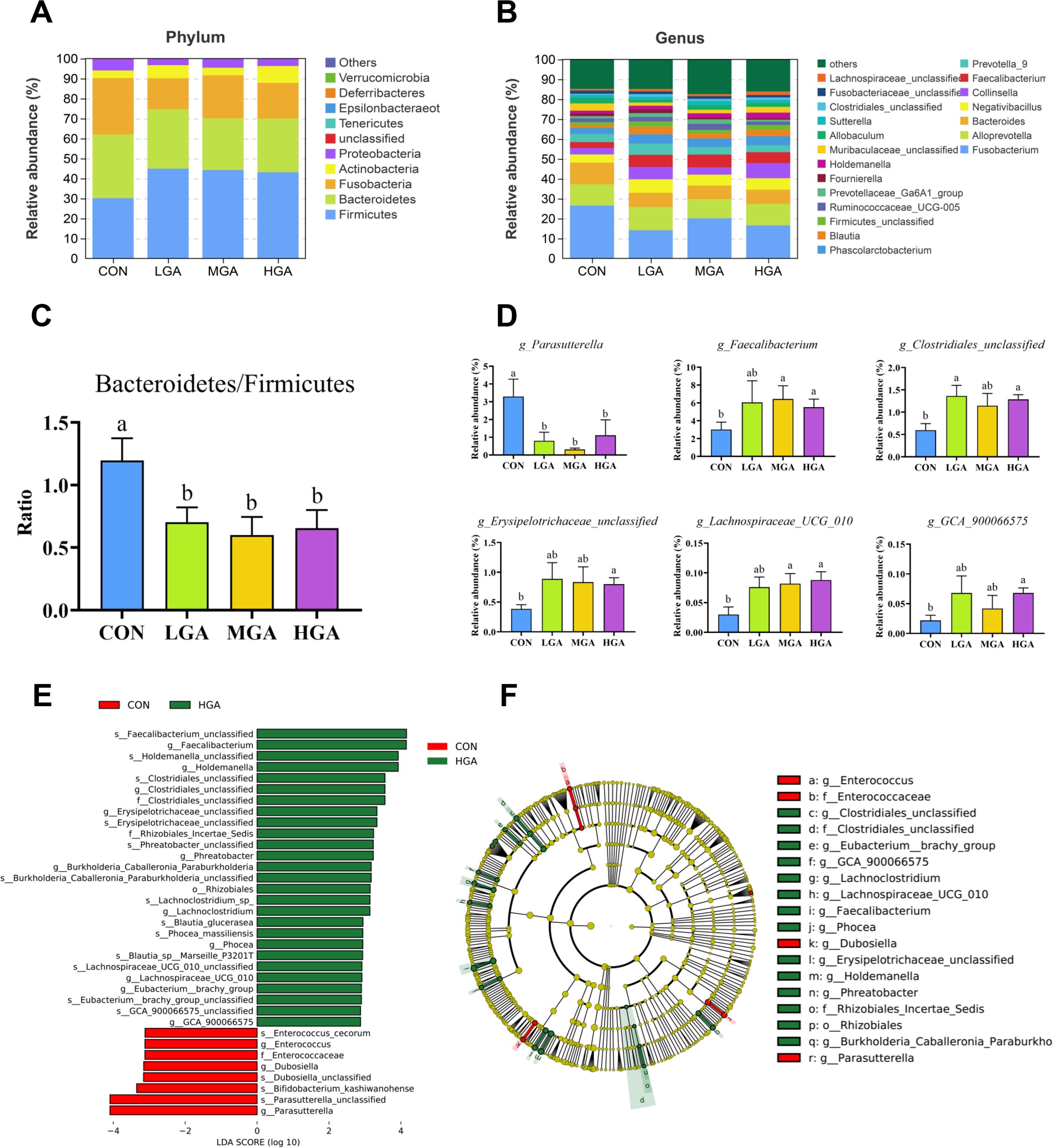Gallic acid (GA) is a natural polyphenolic compound with many health benefits. To assess the potential risk of long-term consumption of GA to gut health, healthy dogs were fed a basal diet supplemented with GA (0%, 0.02%, 0.04%, and 0.08%) for 45 d, and fecal microbiota and metabolomics were evaluated. This study, led by researchers from South China Agricultural University, demonstrated that GA supplementation regulated serum lipid metabolism by reducing serum triglyceride, fat digestibility, and Bacteroidetes/Firmicutes ratio. In addition, the relative abundance of Parasutterella was significantly lower, and the SCFAs-producing bacteria were increased along with fecal acetate and total SCFAs contents accumulation in the 0.08% GA group. They used LC Sciences’ 16S rRNA gene sequencing service on DNA extracted from dog fecal samples. Metabolomics data further elucidated that 0.08% GA significantly affected carbohydrate metabolism by downregulating succinic acid in feces, thereby alleviating inflammation and oxidative stress. Overall, this study confirmed the beneficial effects of long-term consumption of GA on lipid metabolism and gut health, and the optimal level of GA supplementation was 0.08%.
Relative abundance of fecal microbiota
Relative abundance of fecal microbiota at the (A, C) phylum and (B, D) genus levels. (E, F) LEfSe analysis between the CON and HGA groups. Different letters indicate significant (p < 0.05) difference according to ANOVA with Fisher’s LSD multiple comparison test. CON = control; LGA = 0.02% GA; MGA = 0.04% GA; HGA = 0.08% GA.
Yang K, Jian S, Guo D, Wen C, Xin Z, Zhang L, Kuang T, Wen J, Yin Y, Deng B. (2022) Fecal microbiota and metabolomics revealed the effect of long-term consumption of gallic acid on canine lipid metabolism and gut health. Food Chemistry: X 15, 100377. [article]
Gallic acid (GA) is a natural polyphenolic compound with many health benefits. To assess the potential risk of long-term consumption of GA to gut health, healthy dogs were fed a basal diet supplemented with GA (0%, 0.02%, 0.04%, and 0.08%) for 45 d, and fecal microbiota and metabolomics were evaluated. This study, led by researchers from South China Agricultural University, demonstrated that GA supplementation regulated serum lipid metabolism by reducing serum triglyceride, fat digestibility, and Bacteroidetes/Firmicutes ratio. In addition, the relative abundance of Parasutterella was significantly lower, and the SCFAs-producing bacteria were increased along with fecal acetate and total SCFAs contents accumulation in the 0.08% GA group. They used LC Sciences’ 16S rRNA gene sequencing service on DNA extracted from dog fecal samples. Metabolomics data further elucidated that 0.08% GA significantly affected carbohydrate metabolism by downregulating succinic acid in feces, thereby alleviating inflammation and oxidative stress. Overall, this study confirmed the beneficial effects of long-term consumption of GA on lipid metabolism and gut health, and the optimal level of GA supplementation was 0.08%.
Relative abundance of fecal microbiota
Relative abundance of fecal microbiota at the (A, C) phylum and (B, D) genus levels. (E, F) LEfSe analysis between the CON and HGA groups. Different letters indicate significant (p < 0.05) difference according to ANOVA with Fisher’s LSD multiple comparison test. CON = control; LGA = 0.02% GA; MGA = 0.04% GA; HGA = 0.08% GA.
Yang K, Jian S, Guo D, Wen C, Xin Z, Zhang L, Kuang T, Wen J, Yin Y, Deng B. (2022) Fecal microbiota and metabolomics revealed the effect of long-term consumption of gallic acid on canine lipid metabolism and gut health. Food Chemistry: X 15, 100377. [article]

